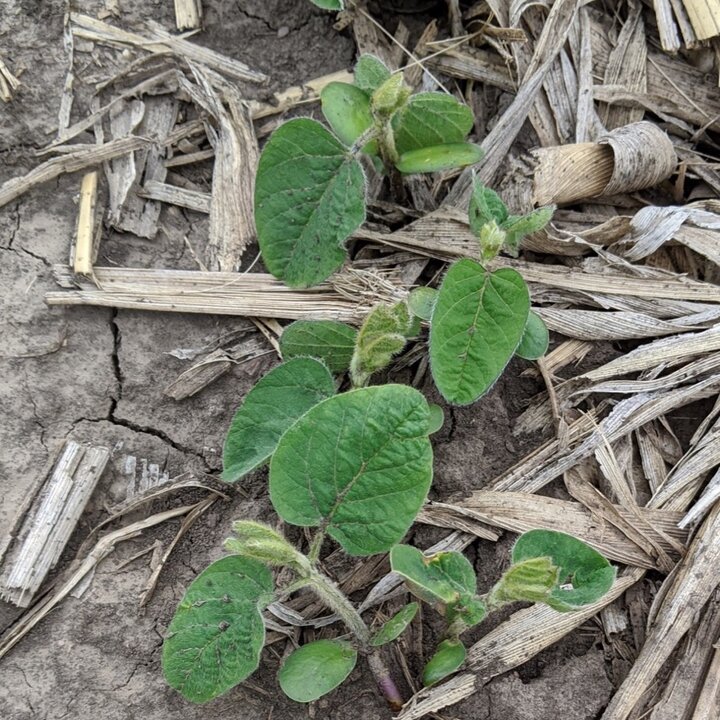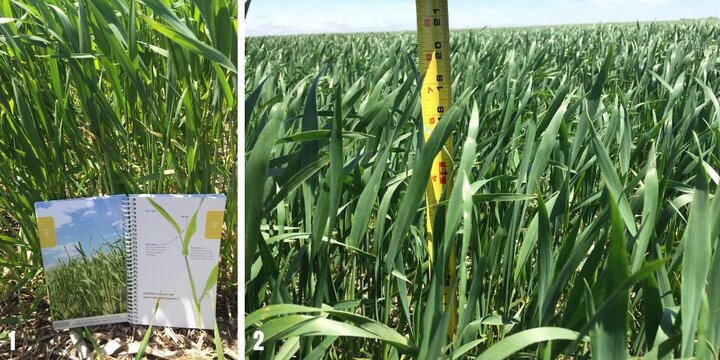Jenny Rees
Extension Educator York and Seward Counties

Corn ranges from planted to V4 and is starting to green up after being so yellow. Emergence pretty good overall except for worked or cloddy ground. Some anhydrous burn being seen in fall and spring strip till due to dry conditions. Hoping for rain soon. Soybean ranges from planted to nearing V1. Both corn and beans recovered well from frost damage in the area. There’s seed corn maggot showing up in some soybean fields causing damage in spite of seed treatments being used. Mostly occurring in former seed corn fields with radishes/turnips on them, but also occurring in previous corn fields too. Soybean can compensate greatly for reduced stands. Please see the Seed Corn Maggot and Soybean Replant Considerations articles from CropWatch for more information. Seeing some weed escapes from pre’s that didn’t get activated and post’s should be applied soon for overlapping residual. (5/21/20)
Nathan Mueller
Cropping Systems Extension Educator for Saline, Jefferson, and Gage counties
Corn and soybean planting is complete for most producers. Planting progress was well ahead of normal this season due to the dry weather during April and May, with an average of 5.3 days suitable for field work per week locally since the beginning of April through last week. Emergence and early growth of corn and soybeans will be picking up with the warmer forecast, with many cornfields already at the V2 growth stage. Soybeans emergence is slightly behind corn with early growth of many fields at the VE-V1 growth stage. A few alfalfa fields cut early this week due to pressure from alfalfa weevil larvae. Some growers report poor growth and lower than normal tonnage expected for first cutting due to the April freeze events, alfalfa weevil, and dry topsoil. Irrigation of new seeding alfalfa and wheat have occurred this spring due to the abnormally dry conditions. Winter wheat growth stages range from Feekes 7 to early Feekes 10 (awns starting to emerge by flag leaf). No stripe or leaf rust is reported, but scouting should continue to be a priority along with planning for fungicide application at flowering for suppression of Fusarium head blight if the wetter weather patterns verifies. Read more about developing a plan for Fusarium head blight in a recent blog post. Pasture conditions have started to slide due to the abnormally dry conditions too. However, excellent subsoil moisture has been valuable to alfalfa, wheat, and pastures lately. (5/21/20)

Sarah Sivits
Nebraska Extension Educator Dawson, Buffalo, Hall Counties
We had several rain showers and even some hail over the weekend. Some places across the three-county region are wet while others are dry. Most of the corn is up but may have experienced frost damage from last week. Those areas impacted by frost have recovered but some low spots in early planted beans had to be replanted. Seed corn still needs to go in for many producers. Soybeans range anywhere from still needing to be planted to emerged or first unifoliate is present. Some producers still need to plant their sorghum/forage crop. Alfalfa and wheat are growing right along. I haven’t seen any alfalfa weevil larvae yet, but we are keeping an eye open for them. Some wheat fields will be close to heading in the coming weeks. (5/21/20)

